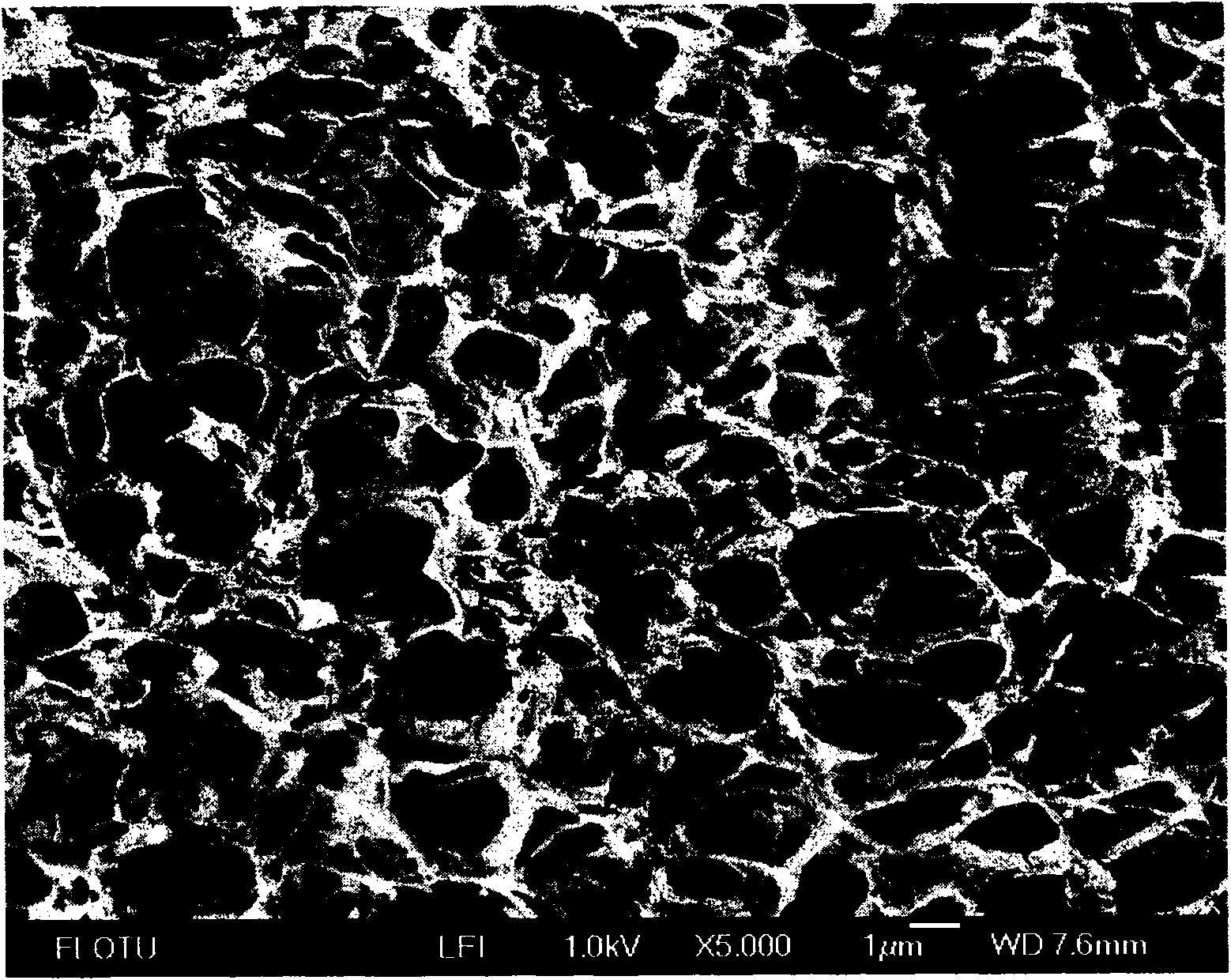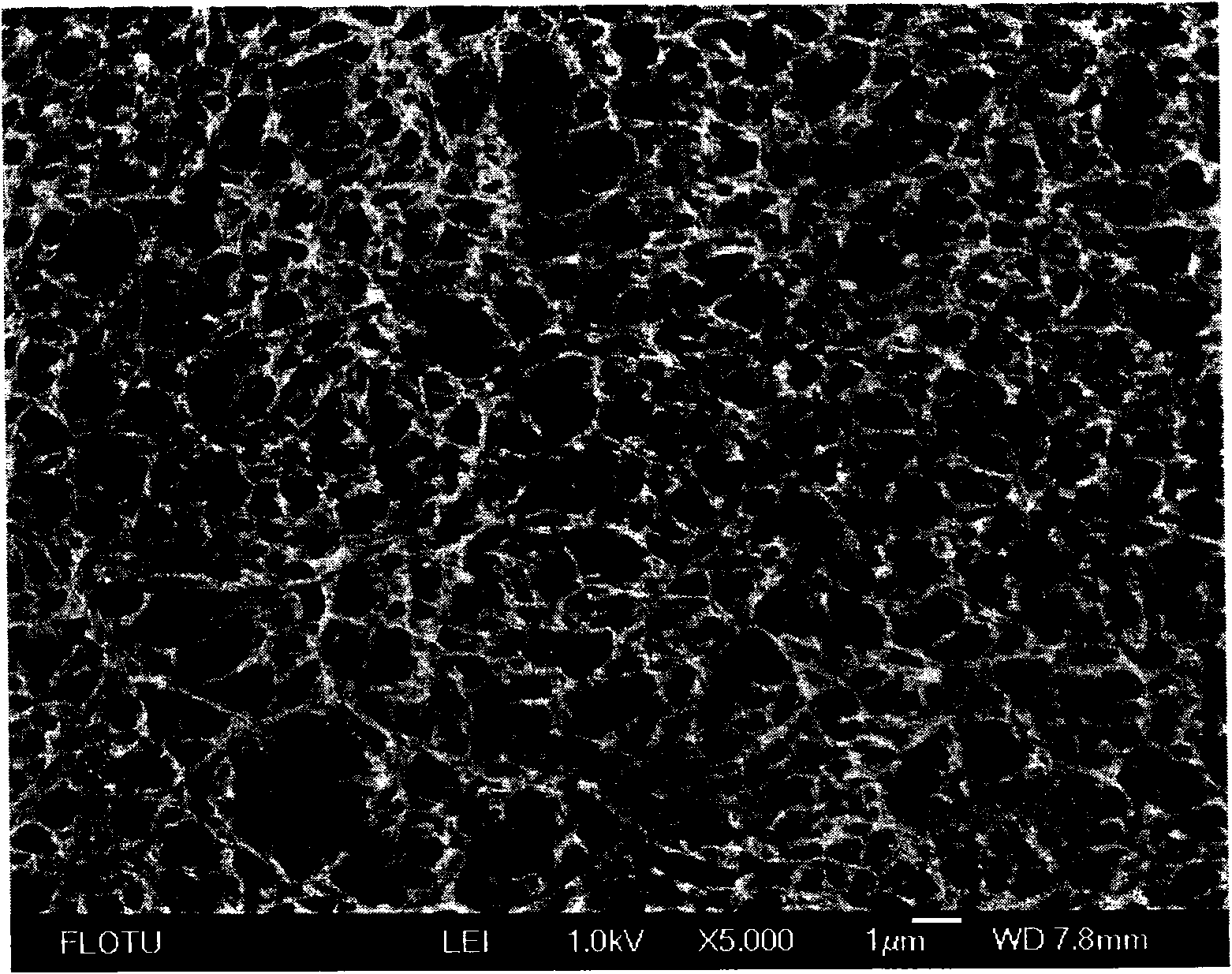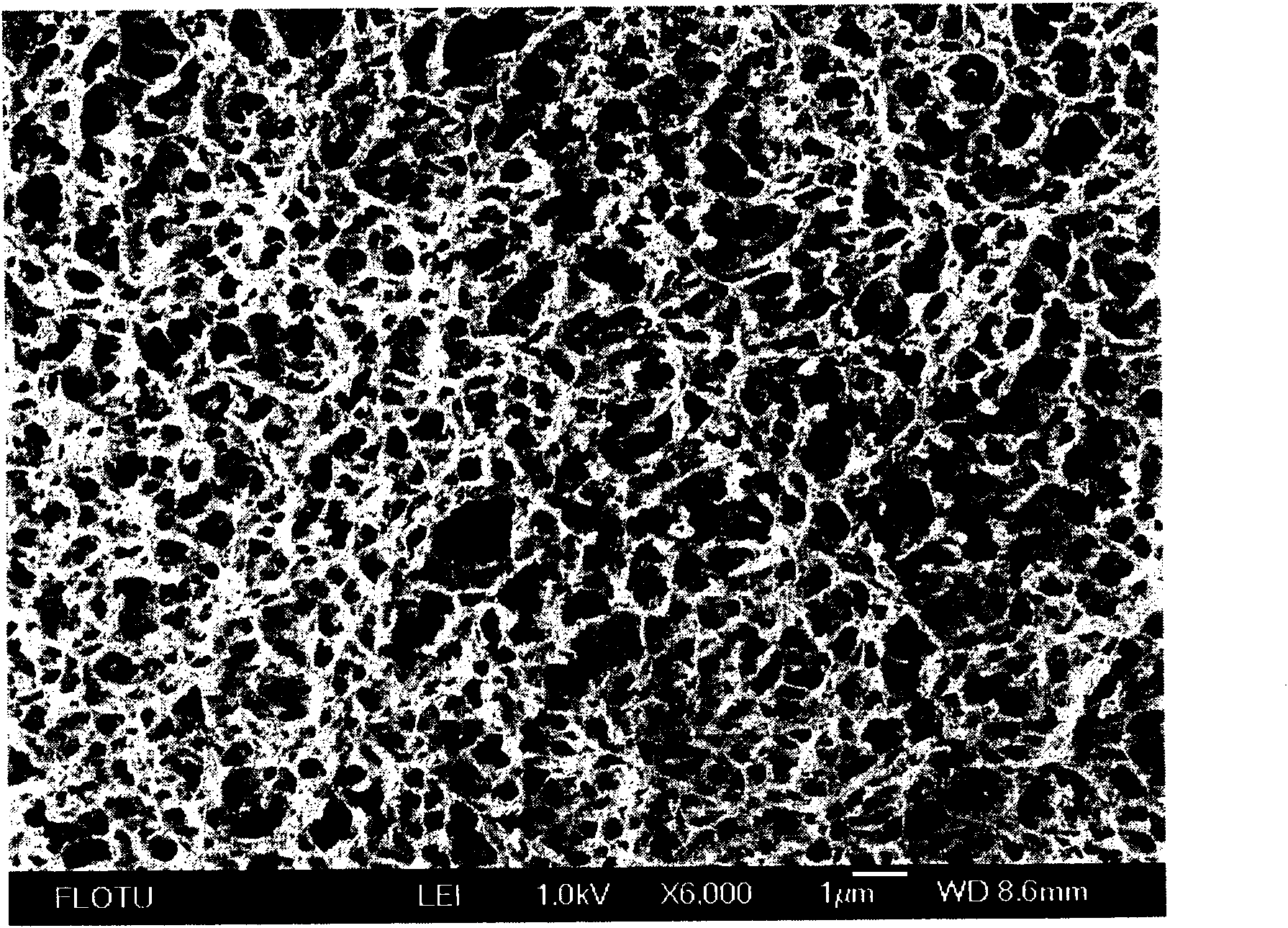Polyvinylidene fluoride microporous film preparation method
A technology of polyvinylidene fluoride and polyvinylidene fluoride resin, which is applied in the field of preparing polyvinylidene fluoride microporous membranes and thermally induced phase separation, which can solve the difficulty of extraction and recovery of ternary diluents and other issues to achieve a good penetration effect
- Summary
- Abstract
- Description
- Claims
- Application Information
AI Technical Summary
Problems solved by technology
Method used
Image
Examples
preparation example Construction
[0024] The method for preparing PVDF microporous membrane of the present invention, carries out as follows:
[0025] 1) Mix polyvinylidene fluoride resin with compound diluent, wherein the mass percentage of polyvinylidene fluoride is 20%-60%, and the corresponding mass percentage of compound diluent is 80%-40%;
[0026] 2) Put the mixture in step 1) into a stirred tank, heat up to 180°C-220°C to form a homogeneous solution, and let it stand for defoaming;
[0027] 3) Scrape-coat the homogeneous solution in step 2) on the support net to form a flat plate or spin it into a hollow fiber through a spinneret and immerse it in the cooling liquid to separate the polyvinylidene fluoride from the composite diluent and solidify Form flat membrane or hollow fiber membrane;
[0028] 4) extracting the composite diluent in the membrane obtained in step 3) with an alcohol or ether extractant to obtain a polyvinylidene fluoride flat microporous membrane or a hollow fiber microporous membran...
Embodiment 1
[0037] Embodiment 1: be 20% by mass percentage, the PVDF resin that weight-average molecular weight is 100,000, mass percentage is the compound diluent of 80% (high temperature solvent methyl benzoate mass percentage is 90% in the compound diluent, non-solvent hexadiene Dioctyl acid (10% by mass percent) was put into a stirred tank and heated to 180° C., stirred and mixed to form a homogeneous solution, and left to stand for 2 hours. The homogeneous solution was scraped onto a support net to form a flat plate with a thickness of 200 μm, and immersed in a water bath at 0° C. to separate and solidify the solution to form a film. The cured flat film was extracted with ethanol and dried.
[0038] The cross-section of the membrane is a uniform spongy structure with a breaking strength of 2.7MPa, a breaking elongation of 30%, and a pure water flux of 3,136L / (m 2 ·.hr.·0.1MPa).
Embodiment 2
[0039]Embodiment 2: be 25% by mass percent, the PVDF resin that weight-average molecular weight is 800,000, mass percent is the compound diluent of 80% (in the compound diluent, high-temperature solvent triacetin mass percent is 30%, non-solvent benzyl alcohol The mass percentage is 70%) in a stirred tank and heated to 180° C., stirred and mixed to form a homogeneous solution, and left to stand for 2 hours. The homogeneous solution was extruded through the spinneret under a certain pressure to form a hollow fiber (outer diameter 1.5mm, inner diameter 0.9mm), and then directly immersed in a water bath at 80°C to separate and solidify the solution. The cured PVDF hollow fiber microporous membrane was extracted with ethanol and then dried.
[0040] The cross-section of the membrane is a uniform spongy structure with a membrane breaking strength of 3.1MPa, a breaking elongation of 30%, and a pure water flux of 2,672L / (m 2 ·.hr.·0.1MPa).
PUM
| Property | Measurement | Unit |
|---|---|---|
| breaking strength | aaaaa | aaaaa |
| breaking strength | aaaaa | aaaaa |
| breaking strength | aaaaa | aaaaa |
Abstract
Description
Claims
Application Information
 Login to View More
Login to View More - R&D
- Intellectual Property
- Life Sciences
- Materials
- Tech Scout
- Unparalleled Data Quality
- Higher Quality Content
- 60% Fewer Hallucinations
Browse by: Latest US Patents, China's latest patents, Technical Efficacy Thesaurus, Application Domain, Technology Topic, Popular Technical Reports.
© 2025 PatSnap. All rights reserved.Legal|Privacy policy|Modern Slavery Act Transparency Statement|Sitemap|About US| Contact US: help@patsnap.com



